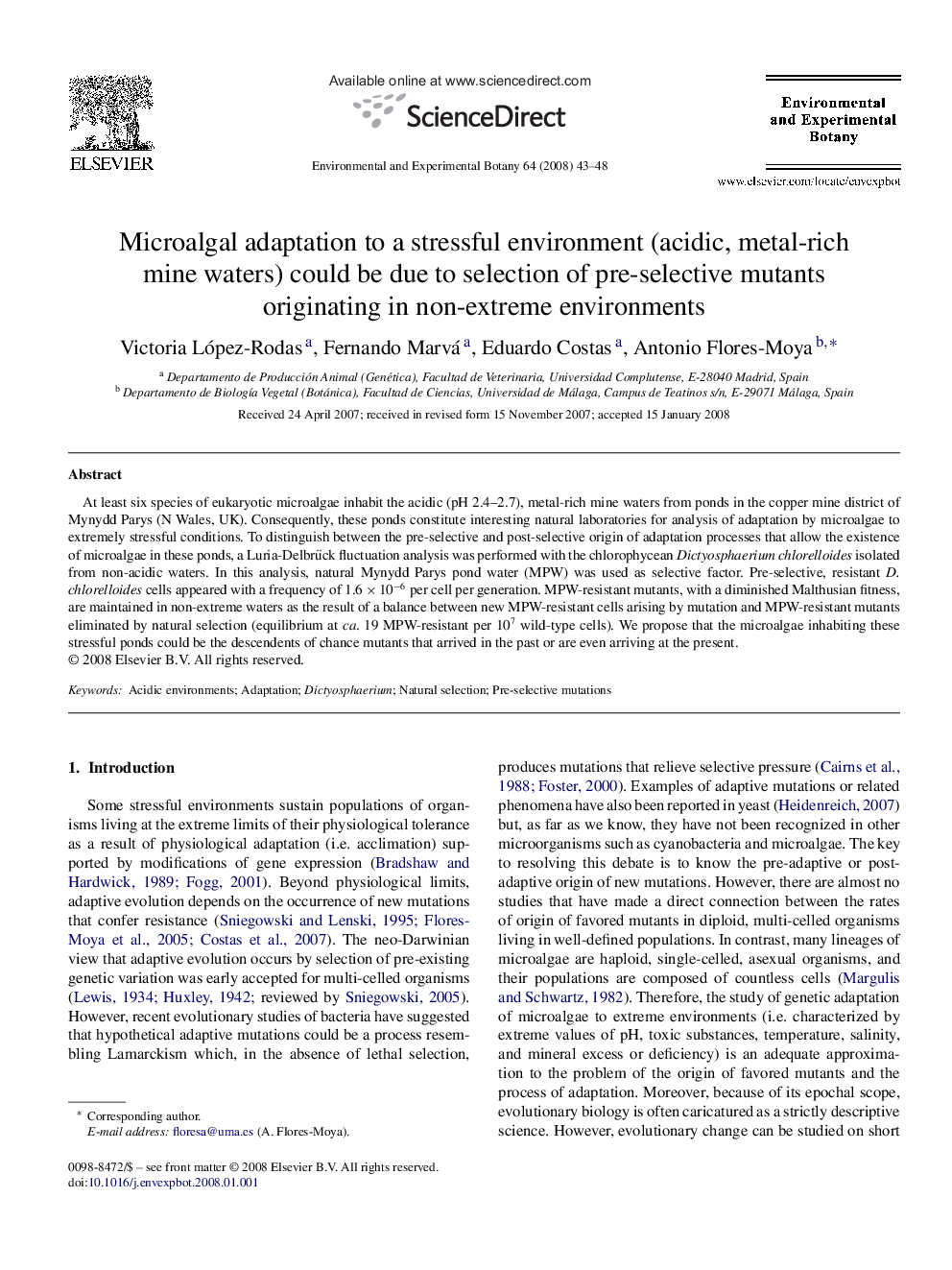| Article ID | Journal | Published Year | Pages | File Type |
|---|---|---|---|---|
| 4555160 | Environmental and Experimental Botany | 2008 | 6 Pages |
At least six species of eukaryotic microalgae inhabit the acidic (pH 2.4–2.7), metal-rich mine waters from ponds in the copper mine district of Mynydd Parys (N Wales, UK). Consequently, these ponds constitute interesting natural laboratories for analysis of adaptation by microalgae to extremely stressful conditions. To distinguish between the pre-selective and post-selective origin of adaptation processes that allow the existence of microalgae in these ponds, a Luria-Delbrück fluctuation analysis was performed with the chlorophycean Dictyosphaerium chlorelloides isolated from non-acidic waters. In this analysis, natural Mynydd Parys pond water (MPW) was used as selective factor. Pre-selective, resistant D. chlorelloides cells appeared with a frequency of 1.6 × 10−6 per cell per generation. MPW-resistant mutants, with a diminished Malthusian fitness, are maintained in non-extreme waters as the result of a balance between new MPW-resistant cells arising by mutation and MPW-resistant mutants eliminated by natural selection (equilibrium at ca. 19 MPW-resistant per 107 wild-type cells). We propose that the microalgae inhabiting these stressful ponds could be the descendents of chance mutants that arrived in the past or are even arriving at the present.
